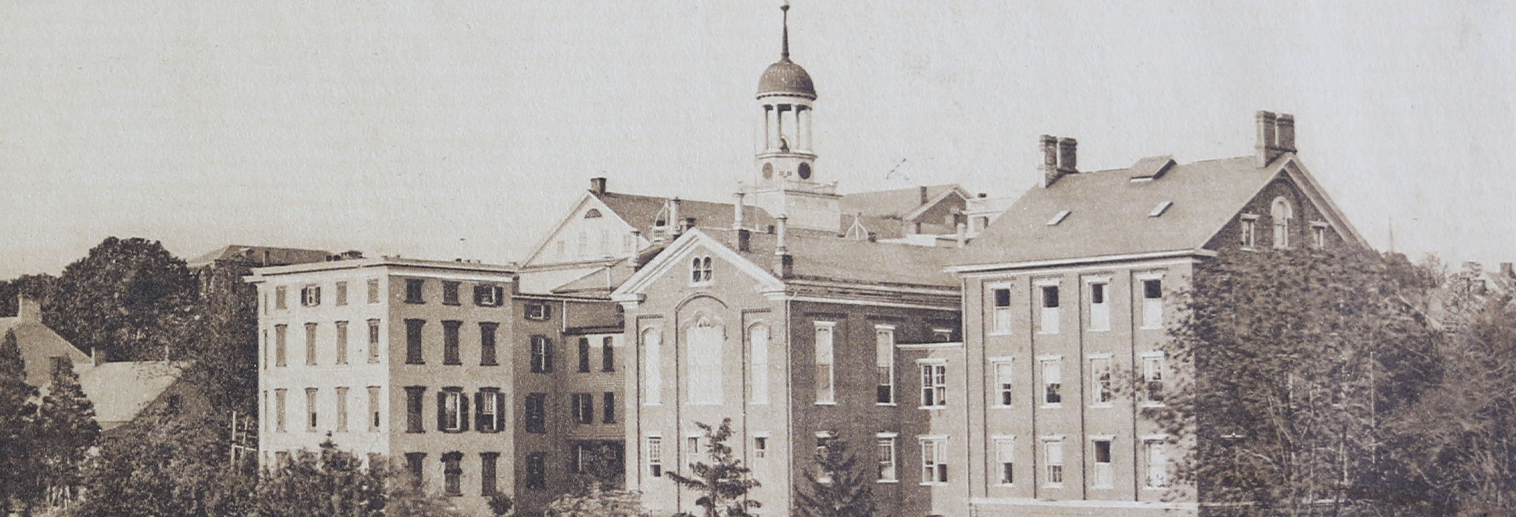Our History
Education for All
Moravian University was founded on a belief that education is essential for all, without regard for gender or social standing. It was an idea ahead of its time, but that didn’t stop us. In fact, Moravian thrives on new and innovative ideas and has been embracing them ever since.
"Not the children of the rich or of the powerful only, but of all alike, boys and girls, both noble and ignoble, rich and poor, in all cities and towns, villages and hamlets, should be sent to school." –John Amos Comenius
A Brief History
The history of Moravian University is anything but brief—we're the 6th oldest college in America, after all—but we'll stick to the highlights for now. Our history doesn’t follow a singular, linear path. Though our story does start with a singular idea and moment. It follows two schools and two winding paths that eventually meet and merge.
Girls’ School
- 1742: Established in Germantown, Pennsylvania, by Benigna von Zinzendorf; moves to Bethlehem seven weeks later
- 1745: Moves to Nazareth
- 1749: Moves to Bethlehem (now known as South Campus)
- 1785: Opens to pupils outside the Moravian Church and becomes known as Moravian Female Seminary
Boys’ School
- 1742: Opened in Bethlehem by Moravian Church
- 1743: Second boys’ school opened in Nazareth by Moravian Church
- 1759: Two schools merge to form Nazareth Hall, with survives until 1929
- 1807: Men’s college and seminary established as extension of Nazareth Hall and called Moravian College and Theological Seminary
- 1858: Moves to Bethlehem
Together
- 1863: Both college and seminary chartered by state of Pennsylvania to grant baccalaureate degrees
- 1954: Women’s and men’s institutions merge to form first coeducational institution of higher education in the Lehigh Valley
- 2016: Moravian College reorganizes into three schools: School of Natural and Health Sciences; School of Arts, Humanities, and Social Sciences; and Moravian Seminary
- 2021: Moravian College becomes Moravian University
UNESCO World Heritage
Moravian Church Settlements—Bethlehem became the 26th World Heritage site in the United States on July 26, 2024. Along with Gracehill, Northern Ireland, and Herrnhut, Germany, Bethlehem joins Christiansfeld, Denmark as a single World Heritage site that represents the outstanding universal value of these historic settlements and the worldwide influence of the Moravian Church. As a new inscribed property on the World Heritage list, Bethlehem joins other properties such as the Taj Mahal, Grand Canyon National Park, the Great Barrier Reef, and the Statue of Liberty.

We're Carrying on the Tradition
You can’t have a history spanning nearly 280 years without establishing a few traditions along the way. And we take ours seriously.
The Blue and Grey
Did you know the colors blue and grey were adopted by Moravian University in 1894? With the bitter battles of the American Civil War still a recent memory, the choice of colors represented a gesture of unity and healing.
The Moravian Mile
The distance between North and South campuses, about 0.8 miles, is known as the “Moravian Mile.” As part of orientation, first-year students traditionally walk the Mile between campuses, traveling from North to South, through Historic Bethlehem on their way. Once their time at Moravian University is complete, graduating seniors take part in the “Backwards Walk,” walking the Moravian Mile as they did in their freshman year, but this time in reverse. Don’t worry—you can always take the shuttle!
Heritage Day
Established by President Grigsby, Heritage Day is a celebration of Moravian tradition, community, and service. Each year, we dedicate a fall day to learning about the founders of Moravian University and our cultural heritage, as well as serving our community.
Vespers
A local holiday tradition hosted by Moravian University, Christmas Vespers is a beautiful service that features two forms of Moravian worship, the "Singstunde" and the Candlelight Service. Music by our students combines with the beauty of the Liturgy in this service of worship for the College community and friends.
Founder’s Day
We observe Founder’s Day each year to remember and learn from the revolutionary men and women who came before us at Moravian University. The day includes a reception, Lovefeast, and luncheon, and features stories and artifacts from our past.

